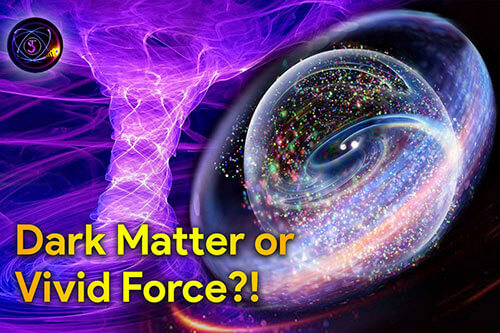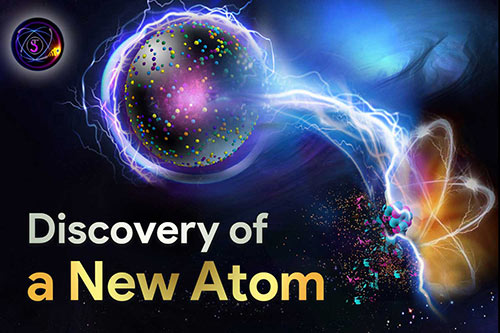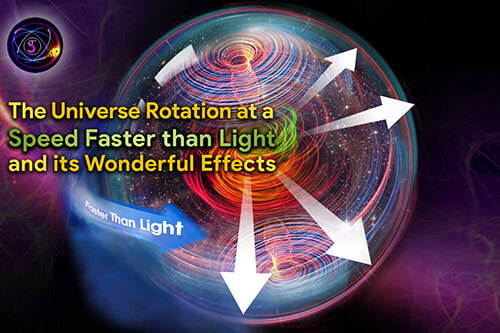
The Universe Rotation at a Speed Faster than Light and its Wonderful Effects
Merely looking at the world around us, let us discover that, at the microscopic or macroscopic level, the rotational movement is more remarkable than the other types of movement existing in the Universe. For example, take a glance to this electron that revolves around itself within the atom. Or to the rotation of Moon, or of the Earth or of the Sun that revolves around their own axis. The Milky Way also follows the same rule and revolves around itself. So the Universe is not excepted from this rule and is in rotation around itself. Now we are going to study the speed of the astronomical objects at the hypothetical edges of the Universe:
Method A:
Let us use the basic formula of speed equal to the distance divided by time and suppose that the orbit is a circle centered on the assumed center of the Universe. Then, knowing the period and the radius of rotation, we can calculate the average orbital speed for each of these celestial objects. The period of moon’s rotation around its axis is 27 days and its radius is 1730 km. So the speed of this rotation is 16 km per hour. Let's have a look to this table:
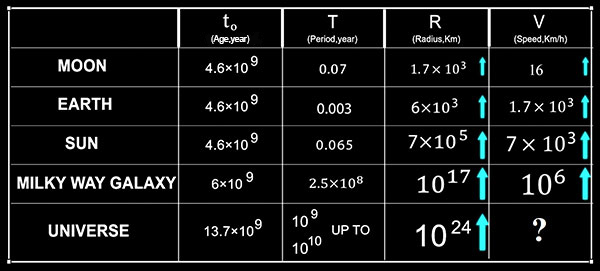
This table leads us to two important points: the more the radius of rotation increases, the more the speed increases. Second, the rotation period of celestial objects is much shorter than their lifetime. Since the age of our Universe is estimated at about 13.7 billion years, to measure the speed of a celestial object rotating at the edges of the observable Universe, we take the rotation period between 1 and 10 billion years. By a simple calculation, we can see that the speed at the edges of the Universe is approximately between 1011 or 1012 km/h that is 100 or 1000 of times greater than the light speed which is about 109 km/h in vacuum.
Method B:
The cosmological principle posits the following: Viewed on a sufficiently large scale, the properties of the universe are the same for all observers and according to the Copernicus principle the universe is globally homogeneous and isotropic. In such a system, the sizes do not change suddenly and from one corner to the other, some harmony could be observed. Suppose a celestial object rotates at a different angular velocity. According to Newtonian laws, this object must pass into another orbit and it is even possible that it strikes another object and consequently disrupts the homogeneity of the Universe. So we can say that all celestial objects revolve around the supposed center of the Universe at different distances but with an identical angular velocity and it is this identity that causes the homogeneity of the Universe on large scales.
The Moon orbits Earth at a speed of 3600 km/h: And as already mentioned, the celestial objects that are at the edge of the Milky Way, which means at 1017 km from its center, rotate at a speed of 106 km/h. According to the latest research, the most distant celestial objects are at 1024 km. From the homogeneity of the Universe, we deduce the identity of the angular velocity everywhere in the Space and we can, therefore, say that the angular velocity at the edges of the Milky Way and at the edges of the observable Universe is equal. Based on the cosmological principle and with simple calculations on the orbital speed and distance of the celestial objects, we can prove that any celestial objects located at 1020 km up to 1024 km are rotating with a speed of 109 km/h.
Method C:
1024 km is the radius of the observable Universe; this means that science is unable to go further. Let us assume that the real value of the Universe radius would be 1050 km; By a simple calculation we could find out that the speed of celestial objects at the edges of the Universe is billions of times greater than that of light.
II. Dark Matter or Vivid Force?!
The mass, by definition, is a measure of resistance of an object to acceleration when a force is applied. And, in principle, the mass occupies space and it is there where the force takes effect. Given what has been said, Dark Matter does not meet the definition of mass; because it is everywhere but we can't find it. Indeed, what is called Dark Matter is an illusionary definition that must be corrected. As explained in the Beginning, at the edges of the Universe the speed exceeds that of light and celestial objects are rotate with a speed several times higher than the speed of light. The enormous difference between this speed and the speed at the supposed center of the Universe causes a vortex force. This same force creates a rotation and a force inward; like a vortex that turns and pushes everything in the center of the rotation. So what is called Dark Matter is only a Vivid Force that is generated from the difference in the speed of rotation of celestial objects at the edge of the Universe and those that rotate near its supposed center.
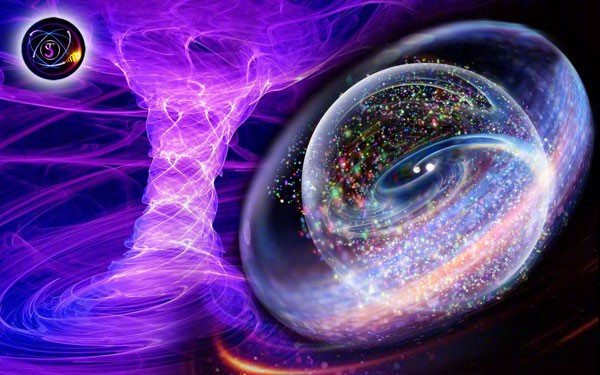
III. Dark Energy
But apart from the difference between the speed of celestial objects at the edges of the Universe and the speed of those near the supposed Centre of the Universe, if we observe the rotation of celestial objects, we can better understand the nature of dark energy. This rotation generates a centrifugal force that is applied to any object rotating around the center and moves them away and increases their radius. Although this force is inversely related to the radius of gyration, but it is directly related to the square of the velocity.
And as we have already seen, the ratio between velocity and radius, or angular velocity, is constant everywhere due to the homogeneity of the Universe.
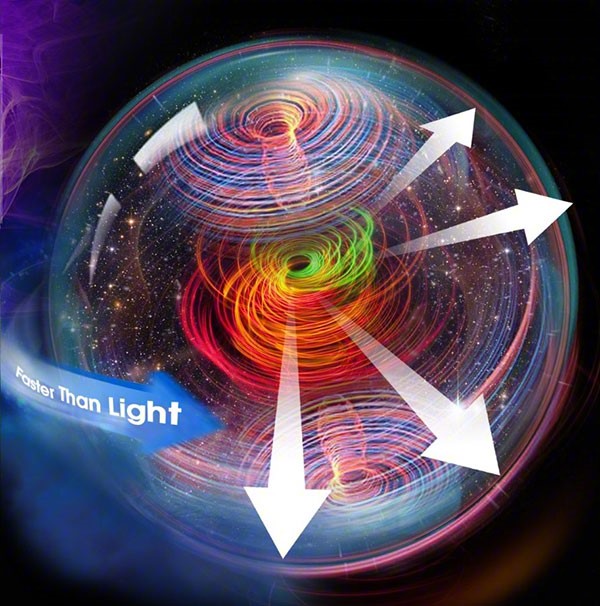
Consequently, the greater the radius and the speed of gyration the greater the force. In other words, celestial objects that are further away from the supposed center of the Universe, because of their higher rotational speed, move away with more acceleration and it is precisely this energy that causes the accelerated expansion of the Universe and is called dark energy . Saleh Theory believes that dark energy is the effect of the centrifugal force generated by the rotation of objects around the supposed center of the Universe.



